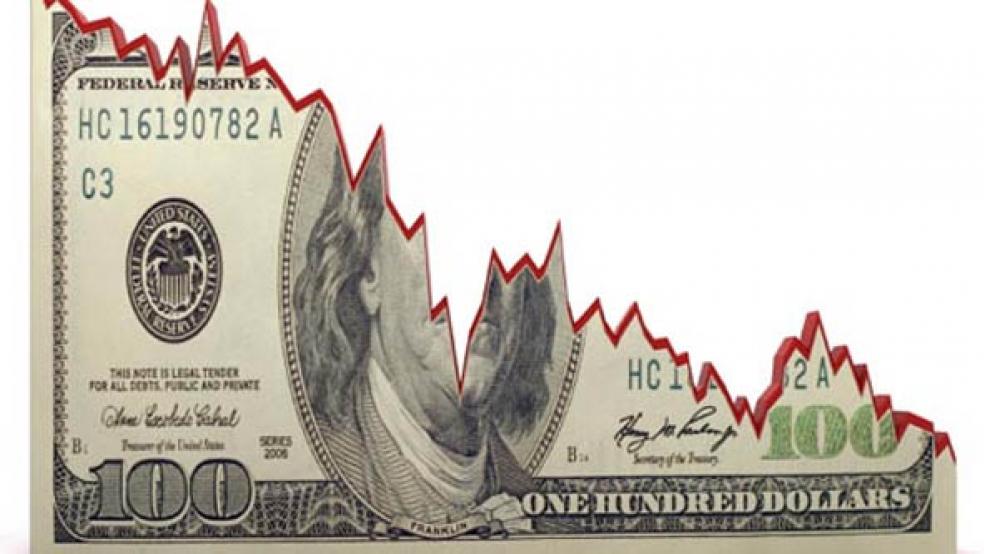Rising federal debt could pose a negative outlook for the country’s AAA credit rating, Moody’s warned in a quarterly report on Thursday.
The negative outlook would be dropped only if the U.S. imposed measures of fiscal austerity, such as curbing spending or raising taxes, according to the report. A negative outlook on a rating could lead to a 90-day review for downgrade.
If the U.S. were to lose its AAA rating, which it’s held since 1917, the government would have to offer higher-risk premiums on debt, in sharp contrast to the safe-haven status the Treasury bond has long enjoyed. The continued high level of deficits and upward debt trajectory could cause borrowing costs to rise more than now expected, making progress in reducing deficits more difficult in the future, the report said. Moody’s reminded the U.S. and other European countries of the need to impose deficit reduction plans to help control rising health care and pension subsidies.
Danger Ahead
The threat of downgrading the U.S. government debt might be misleading, said Mark Thoma, professor of economics at the University of Oregon and contributor to The Fiscal Times. “I was a bit surprised that they had gone as far as they had,” he said. “It was a bit overwrought in terms of the immediate danger. I think there is a longer-run danger if we don’t get things under control.”
While other countries such as France, Germany and the U.K. have moved toward deficit reduction programs, the U.S. stands alone in stimulus funding that could add to the federal deficit over time. “We therefore retain stable outlooks on these countries’ ratings, although there are questions about the willingness of the U.S. to take the necessary steps,” the Moody’s report said.
In November, the Federal Reserve announced it would provide a second round of quantitative easing by purchasing $600 billion in Treasury securities to stimulate growth. Deficit hawks attacked the program, dubbed QE2, claiming it would further complicate monetary policy. Now Moody’s joins the list of critics. Moody’s said QE2 will not stimulate growth sufficiently to foster enough revenue creation to bring down the budget deficit.
The report said the U.S. and Britain had the steepest increases in government debt. Still, the report notes that despite slower economic growth forecasts, the U.K.’s creditworthiness remains high due to the ambitious fiscal adjustment program.
Another rating agency, Standard and Poor’s, has also raised concerns about the U.S. debt, which stands at $14 trillion and counting. “We can’t rule out the possibility that maybe one day we might have to change the outlook,” Carol Sirou, head of the agency’s French office, told The Wall Street Journal. However, Standard & Poor’s spokesperson David Wargin said the comment was based on remarks that were made last year.
Some experts say Moody’s warning is not the only report sounding the alarm on federal debt. Moody’s first issued the same urgent message in December when President Obama brokered the tax cut package with Republicans. And over the past few months, a handful of commissions have offered recommendations to reduce the deficit.
“There have been plenty of warnings out there including the fiscal commission blowing bugles all over the place,” said Bill Frenzel, guest scholar at Brookings Institute, a D.C.-based think tank. “The policy makers have shown little interest in responding.”
The report noted that President Obama’s bipartisan fiscal commission’s roadmap for trimming spending could help reverse the upward trajectory in debt rations, but that it isn’t likely to be adopted.
Related Links:
S&P, Moody’s Warn on US Credit Rating (The Wall Street Journal)
Moody’s Says U.S. Debt Could Test Triple-A Rating (The New York Times)
Obama Pays More Than Buffett as U.S. Risks AAA Rating (Bloomberg)


